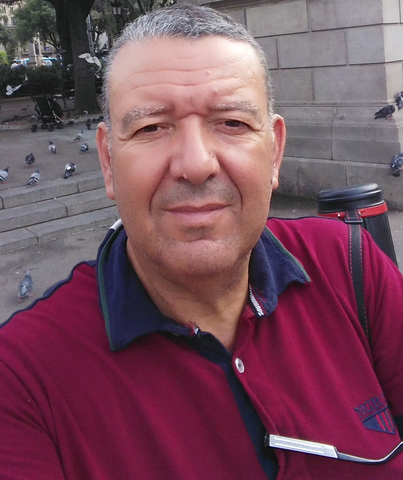Prof Monji Kherallah
1859
ACIT'2025 will be held in Arab Academy for Science, Technology & Maritime Transport, December 16-18, 2025 - Alexandria, Egypt
1859

Prof Monji Kherallah was born in Sfax, Tunisia, in 1963. He received the Ing. Diploma degree, the Ph.D. and HU in electrical engineering, respectively in 1989, 2008 and 2012, from University of Sfax (ENIS). For fourteen years ago, he was an engineer in Biotechnology Center of Sfax.
Now he is a professor in Faculty of Science of Sfax and member in Research Group of Intelligent Machines: REGIM-Lab. He has more than 70 papers, including journal papers and book chapters.
His contribution also includes some international project as DAAD project from April 2007 to March 2010 and EOLES Tempus project from September 2012 to 2015. He is feudatory of professional master of Metrology and Instrumentation: MPMI created on 2015/2016 in Faculty of Sciences of Sfax. His teaching skills are around these themes: Analog Electronics, Digital Electronics, Power Electronics, Industrial Maintenance, Sensors and industrial Instrumentation, Pattern Recognition, Conflict Management, Business negotiation techniques. He is a member of IEEE and IEEE AESS Tunisia Chapter Chair, 2010 and 2011. He is reviewer of several international journals.
Facing up to the complex problems of stochastic systems as the handwriting recognition, the use ofthe multiple, hybrid and an association of classifier systemsproves an increasing interest during the last years.Basedon complementarities between classifiers, the association of classifiersincreases the performance of the recognition system whilelimiting the error bound to the use of a unique classifier.The use of the multiple classifier systems benefits fromthe strong points of every classifier. Among these systems,we mention the neuro-fuzzy approach. It is about a neuronal approach developed in a fuzzy concept. Our new fuzzy architecture combined the neural fuzzy approach in a hierarchical waywhich offers a solution to the variability of feature vectorsize.In our approach, we use a sequential version of multipleclassifiers. The complementarities between the developedclassifiers are explained in details in talk. Oursystem is based on the use of neural networks developedin a fuzzy concept. The desired outputs of MLPNN are formed using SOM and FKNNA. Therefore,our system is about neuro-fuzzy networks based on SOMand FKNNA association used in the learning process.The first step of the training process of the recognition system consists in the use of theSOM algorithm. This method is applied in order to organize the input prototype vectors. The advantages of thismethod are: This algorithm is a powerful tool for givingthe real classes' number and not the semantic one. Infact, it is an unsupervised algorithm. It makes a projection of the disordered input vectors on an organizedmap of different clusters and it is able to reduce the highdimensionality of our system to two dimensions. Theresult given by this algorithm will be used in the nextstage.In the second step, we adjusted the means of clusterselements, and we calculated the degree of membership ofdata vectors to each cluster by the Fuzzy K-NearestNeighbor Algorithm (FKNNA), which gives a more realistic description. Finally, we attributed the membershipmatrix obtained by FKNNA to the target of the MLPNNin the training process as a desired output of MLPNN.Our experimentation was released using the Arabic digit data, we applied the MLPNN to test the handwrittendigits extracted from MLCA data.Note that the pre-processing system reduces the complexity existing in the principal recognition system by ahierarchical representation. Then, we detail the different sequences of the proposed system of on-line handwritten digit recognition.